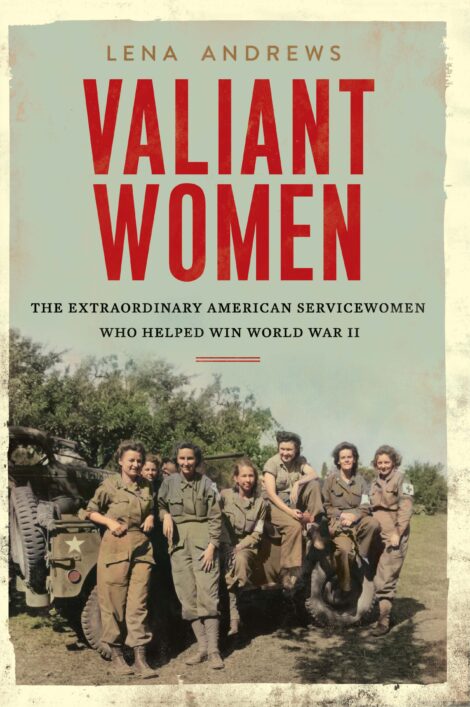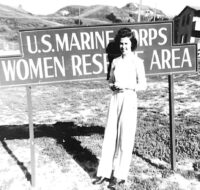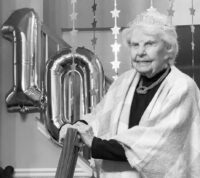
VALIANT WOMEN
The Extraordinary American Servicewomen Who Helped Win World War II
A groundbreaking new history of the role of American servicewomen in WWII, illuminating their forgotten yet essential contributions to the Allies’ victory.
Valiant Women is the story of the 350,000 American women who served in uniform during World War II. These incredible women served in every service branch, in every combat theater, and in nearly two-thirds of the available military occupations at the time.
They were pilots, codebreakers, ordnance experts, gunnery instructors, metalsmiths, chemists, translators, parachute riggers, truck drivers, radarmen, pigeon trainers, and much more. They were directly involved in some of the most important moments of the war,
A groundbreaking new history of the role of American servicewomen in WWII, illuminating their forgotten yet essential contributions to the Allies’ victory.
Valiant Women is the story of the 350,000 American women who served in uniform during World War II. These incredible women served in every service branch, in every combat theater, and in nearly two-thirds of the available military occupations at the time.
They were pilots, codebreakers, ordnance experts, gunnery instructors, metalsmiths, chemists, translators, parachute riggers, truck drivers, radarmen, pigeon trainers, and much more. They were directly involved in some of the most important moments of the war, from the D-Day landings to the peace negotiations in Paris. These women—who hailed from every race, creed, and walk of life—died for their country and received the nation’s highest honors. Their work, both individually and in total, was at the heart of the Allied strategy that won World War II.
Yet, until now, their stories have been relegated to the dusty shelves of military archives or a passing mention in the local paper. Often the women themselves kept their stories private, even from their own families.
Now, military analyst Lena Andrews corrects the record with the definitive and comprehensive historical account of American servicewomen during World War II, based on new archival research, firsthand interviews with surviving veterans, and a deep professional understanding of military history and strategy.
- Mariner Books
- Hardcover
- August 2023
- 368 Pages
- 9780063088337
About Lena S. Andrews
 LENA S. ANDREWS is a military analyst for the Central Intelligence Agency. She has a PhD in political science from MIT, specializing in international relations and security studies. She has spent more than a decade in foreign policy, having previously worked at the RAND Corporation and the United States Institute of Peace.
LENA S. ANDREWS is a military analyst for the Central Intelligence Agency. She has a PhD in political science from MIT, specializing in international relations and security studies. She has spent more than a decade in foreign policy, having previously worked at the RAND Corporation and the United States Institute of Peace.
Praise
“At turns heartbreaking and inspiring, this unique narrative shares the powerful stories of these fearless women who made that decisive victory possible.” — Lt. General DAVID BARNO, US Army (Ret.), former senior American commander of U.S. and coalition forces in Afghanistan
“Read it to learn about, and to honor, those amazing women that served.” — Brigadier General PAULA G. THORNHILL, USAF (Ret.)
“An enlightening revisionist history. …Through interviews with the few servicewomen still alive and comprehensive research, Andrews takes an ingenious look at WWII ‘in a different way.’ It’s a must-read for women’s and military history buffs.” — Publishers Weekly (starred review)
“A welcome celebration of military heroes who deserve more recognition. An invaluable addition to our knowledge of the Allied victory.” — Kirkus Reviews (starred review)
“Brilliantly told…Binge-able and easily approachable for those new to the subject.” — Booklist (starred review)
“A vital and engrossing attempt to correct the record and rightfully celebrate the achievements of female veterans of World War II.” — BookPage (starred review)
“This engaging book offers a wide-ranging look at women’s contributions to the war effort.” — Library Journal (starred review)
Discussion Questions
1. The title of this book is drawn from one of President Harry Truman’s speeches at the end of the war, in which he predicts that the sacrifices of American servicewomen will never be forgotten. Why do you think the contributions of women in uniform are unknown to so many Americans?
2. One of the greatest challenges facing American military planners in World War II was meeting the unprecedented manpower demands of modern conflict. How do you think the personnel demands on the US military have changed over the twentieth century? Does the US need more or fewer people to fight contemporary wars than it needed in World War II?
3. The first part of Valiant Women focuses on the women selected to lead the women’s military programs, especially Oveta Culp Hobby, Mildred McAfee, Dorothy Stratton, Ruth Cheney Streeter, and Jacqueline Cochran. What made these women well-suited to lead the nascent women’s programs? What, if anything, allowed them able to overcome the institutional limits on their authority? Do you see any commonalities between these women and those leading large organizations today?
4. When recruiting for the women’s programs, military leadership was fixated on enrolling women who projected with a clean-cut, wholesome image of American womanhood. Did this strategy work as intended? What, if any, were the unanticipated costs of restricting membership in this way?
5. Why do you think the Navy, Coast Guard, and Marine Corps were initially more reluctant than the Army to integrate women into their ranks? How were women like Margaret Chung effective in changing their minds?
6. The backlash toward the women’s military programs was swift. Why do you think some Americans reacted so negatively toward women serving in uniform, even during a time of national crisis? Did military leadership handle these criticisms effectively? Have you observed any similar situations in today’s military?
7. Nurses and medical professionals were often among the women in uniform serving closest to the front lines and its attendant dangers. What do you think drove these women to sign up for such dangerous roles? Could you imagine yourself volunteering to serve in this way?
8. Are you well suited to doing the support tasks that women often performed while serving in the military? Which of the available roles would you have requested if you were in their shoes?
9. Many of the women assigned to stateside, clerical roles thrived in their positions, while others chaffed at their assignments. What do you think led these different reactions? Did the women’s programs effectively manage women’s expectations about military service?
10. Women of color and LGBTQIA servicewomen sometimes faced extreme discrimination, embarrassment, and even physical violence, while in uniform. Why do you think they continued to serve in the face of such disparagement?
11. Valiant Women makes the case that support functions were critical to combat outcomes in World War II. Do you think this argument applies to other situations as well? Where have you seen the importance of support roles in your own work and life? How have you recognized the importance of this work?
12. Why do you think the women of the greatest generation—and especially the women who served in uniform—have been left out of popular narratives on the contemporary women’s movement? How can we better acknowledge their contribution to the progress women have made in the modern era?
Excerpt
Prologue
“Thank You for Even Thinking of Me”
The future of women in the military seems assured. . . . What may be lost in time is the story of how it happened. —LIEUTENANT COLONEL CHARITY ADAMS EARLEY
“OH MY GOD, THERE ARE PEOPLE OUT THERE WHO still care about me?”
Merle Caples* and I had just spent almost an hour and a half on the phone, and were well over the allotted time for our interview. We were finishing up a lively discussion about the Marine Corps war hero John Basilone and his wife, Lena, whom Merle knew from her time at Camp Pendleton in California during World War II, and I was exhausted from trying to keep up.
But Merle showed no signs of tiring. At ninety-eight, her eyesight was deteriorating, as was some of her hearing, but her memory was sharp and she had the conversational stamina to match. Merle had shared many stories about her work during the war—she distributed supplies and equipment to men on their way to the front lines—but insisted that there was still more to tell. She urged me to be in touch with her daughter, Amy, to arrange another interview.
Merle was humble about nearly everything in her story, from the difficulty of her upbringing during the Depression to the importance of her service and even the state of her memory. Even so, I knew in the first five minutes of talking with her that she would be featured in this book. She had the type of story that grabs you instantly and was willing to be honest about the good and the bad of it all. Most important, she loved to talk about her experiences. She just needed someone to listen.
I found Merle the same way that I found many of the other living veterans whom I tracked down for this book, through a feature in a local newspaper. The women usually appeared in the personal-interest piece of the week, whether it was an announcement celebrating the veteran’s 100th—or 108th—birthday, or a story about a veteran being honored at a professional sports game. In one very special case, it was an article featuring a veteran who had just gone skydiving for her 102nd birthday. Whenever I saw mention of a woman who served in World War II, I reached out to ask if they were willing to talk with me.
Like Merle, many of the women I interviewed were surprised by my interest, noting that until recently, few people outside the veterans’ community cared much about their service. Though many of the women appreciated the sudden attention, they often wished it had come earlier, when their memories were sharper. “My memory’s not very good now,” warned one of the women I interviewed, adding, “I got old.”
Their surprise was also a product of humility. Uniformly, the women I spoke with were modest about the contribution they made during their service, thinking it small in the grand scheme of things. “Thank you for even thinking of me,” said another woman at the end of our first conversation.
In part, this humility is the product of generational attitudes about contributing to the war effort. Many men who served in World War II were also uneasy about celebrations of their service, believing firmly that they simply did their part and that doing the right thing should not be deemed exceptional. Too often, however, the reservations of the women I interviewed were tinged with a troubling undercurrent, an unspoken sense that the work they did was too small, too peripheral, too feminine to count in a meaningful way.

Merle [Selma] Caples on a military base in World War II.
Courtesy Caples Family.

Caples celebrates her one hundredth birthday.
Courtesy Caples Family.
How heartbreaking to learn that these incredible women feel this way.
Though I found this belief to be frustratingly commonplace among both the women veterans themselves and the American public, it is also groundless. The American women who donned military uniforms in World War II were, on the contrary, at the center of the Allied strategy for fighting and winning the war. These women were the critical link between the home front and the front lines that allowed the United States to defeat, near simultaneously and on opposite sides of the world, the German, Japanese, and Italian militaries. There is an indisputable line connecting the American victory in World War II to the contributions of women who served in the United States military, and it is time we acknowledged it.
This book is an attempt to correct the record. It begins with a simple set of facts. More than three hundred and fifty thousand American women served in uniform during World War II. They served in every service, in every combat theater, and in nearly two-thirds of the available military occupations at the time. Abroad, these women were sometimes mere miles away from the front lines, and they were directly involved in some of the most important moments of the war, caring for the wounded on the beaches of North Africa, following the front after the D-Day landings, and crash-landing in the Pacific. Many were injured or died for their country, and many received the nation’s highest honors. Their stories are moving, shocking, and worthy of as many books as have been written on men’s participation in this landmark conflict.
However, this book is more than just a recollection of noteworthy stories about the women who fought in World War II. It is also an invitation to look at this old war in a different way—to ask, What larger truths are revealed when we change our perspective?
That is where things get interesting. When we look at World War II from the standpoint of the hundreds of thousands of American women who served in it, we find that they can teach us a great deal about how the war was fought and why the Allies won.
This new perspective reveals that the requirements of total war in the modern era stretch the capacity of even the largest and best prepared combatants. It reveals that women were necessary in World War II because victory required an unprecedented supply and support infrastructure to sustain forces on the front lines, and, for the first time in American history, these demands could not be met by the male population alone. It reveals that although the United States won this war with men serving on the front lines, it also won the war with the contributions of women in uniform serving in unprecedentedly diverse roles, filling the gaps that those men left behind.
These gaps were everywhere. Not only did women work behind thousands of desks doing clerical and administrative tasks, but they also worked, often for the first time, in an extraordinarily diverse set of military occupations. They served as pilots, aircraft trainers, photo interpreters, gunnery instructors, radiomen, metalsmiths, machinist’s mates, chemists, codebreakers, classification experts, lab technicians, translators, parachute riggers, ordnance experts, weather observers, control tower operators, mechanics, truck drivers, radarmen, quartermasters, pigeon trainers, and much more.
In these and many other roles, American women in uniform had a direct and outsize impact on the US war effort, especially in the support functions that underwrote the Allied victory. If we want to fully understand why the Allies won this war, then we must understand its women.
Essay
DEAR READER,
Welcome to the world of Valiant Women. I’m delighted that you’re here.
The idea for this book began almost a decade ago, when I was several years into my graduate work in security studies and had read pretty much every book under the sun about World War II. Then, on a chance visit to the Military Women’s Memorial on the National Mall in Washington, DC, I stumbled onto an exhibit on the women who served in uniform during the war. It left me stunned.
My surprise was a product of two things. First, the sheer scale and scope of women’s contributions in uniform was an astonishing discovery. I learned not only that women served in large numbers in World War II, but also that they were everywhere, doing the essential support work that kept the American war machine humming. Second, the fact that I—a professed expert on World War II—knew virtually nothing about this story was an embarrassing and heartbreaking realization.
Over the next several years I worked hard to rectify my own ignorance. What I found was one of the most inspiring, interesting, and important stories that has never been told about this war. This story changed not just the way I think about who fought in World War II but also my understanding of how we won it.
Valiant Women is the fruit of that labor. All of us—from experts to newcomers—stand to gain from placing American servicewomen and their contributions at the center of the World War II narrative. If reading about these women expands your understanding of the Allied strategy during this watershed moment in American history, even in a small way, then it will have succeeded.
Thank you for giving these extraordinary women the time, interest, and credit they deserve—it is long overdue.
Lena Andrews
